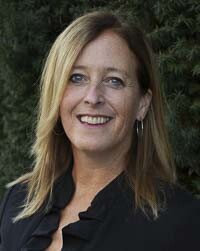
Elizabeth New (Hovde) explains that the state’s paid-leave fund is no safety net for the people
Elizabeth New (Hovde)
Washington Policy Center
Who benefits from Washington state’s paid-leave program? While most workers don’t use the program, despite paying hundreds or thousands of dollars into the Paid Family and Medical Leave (PFML) fund each year, workers with higher incomes and new parents are the fund’s most frequent users. Many people also have used PFML for more than one claim. The fund can be used for bonding with babies, medical needs or both.

The payroll tax for the program is set to rise again this week.
Under the new rate of 0.92%, a person with an income of $50,000 will have $460 of wages going to the fund. For a person making $100,000, $920 will go to the program. To estimate the amount of your wages going to PFML instead of lining your savings account to take care of your own financial needs, see the state’s “premium estimator.” The calculator is a quick way to see how much money you’ve given to a program you might never use and that benefits people in need and people not in need.
PFML is called “popular” by lawmakers who support it and who hope to minimize the concern that a payroll tax imposed on workers for PFML has risen from 0.40% to 0.92% since 2019. The Washington state Employment Security Department also says it needs more money to keep up with the program’s high use.
Alison Eldridge, leave and care assistant director at the Employment Security Department (ESD), told the Senate Labor and Commerce Committee in the summer that a program deficit could happen as soon as this fall and be more severe than was previously projected. The Washington State Standard reported the agency wants to hire 98 new employees over the next two years in response to program use, calling it “a roughly $23 million ask.”
In a recent meeting of the House Labor and Workplace Standards Committee, legislation directed at expanding PFML eligibility criteria and tracking employers to ensure that employees who take advantage of PFML have job security when they return to work was discussed.
I think the best PFML-related legislation for lawmakers to consider would be legislation that ends this payroll-tax-fed program. Allowing workers with higher incomes to pass some of their bills to low-income workers should be unacceptable to all Washingtonians, especially state representatives.
Safety nets for people in need are often worthy of support, but the state’s paid-leave fund is no safety net.
Elizabeth New (Hovde) is a policy analyst and the director of the Centers for Health Care and Worker Rights at the Washington Policy Center. She is a Clark County resident.
Also read:
- Letter: ‘It’s said sarcasm is the lowest form of wit’Amboy resident Thomas Schenk criticizes Olympia’s use of “emergency clauses” and other legislative tactics that limit public participation.
- Letter: ‘We’re going to give them some money and a plane ticket, and then we’re going to work with them’Camas resident Anna Miller supports a new structured self-deportation policy, calling it a balanced approach to immigration and economic needs.
- Opinion: What the 2025 legislature tells us about why Washington’s government keeps failingTodd Myers of the Washington Policy Center argues that Washington’s government fails because it resists humility, experimentation, and accountability in its policymaking.
- Letter: Vancouver needs broader leadership than just a teacher’s lensVancouver resident Peter Bracchi urges Mayor Anne McEnerny-Ogle not to seek another term, calling for more diverse and inclusive leadership rooted in broader experiences.
- Opinion: Legislative session ‘was full of ups and downs and many learning experiences’Rep. John Ley reflects on the 2025 legislative session, highlighting local funding victories and warning of major tax increases passed by the majority.










